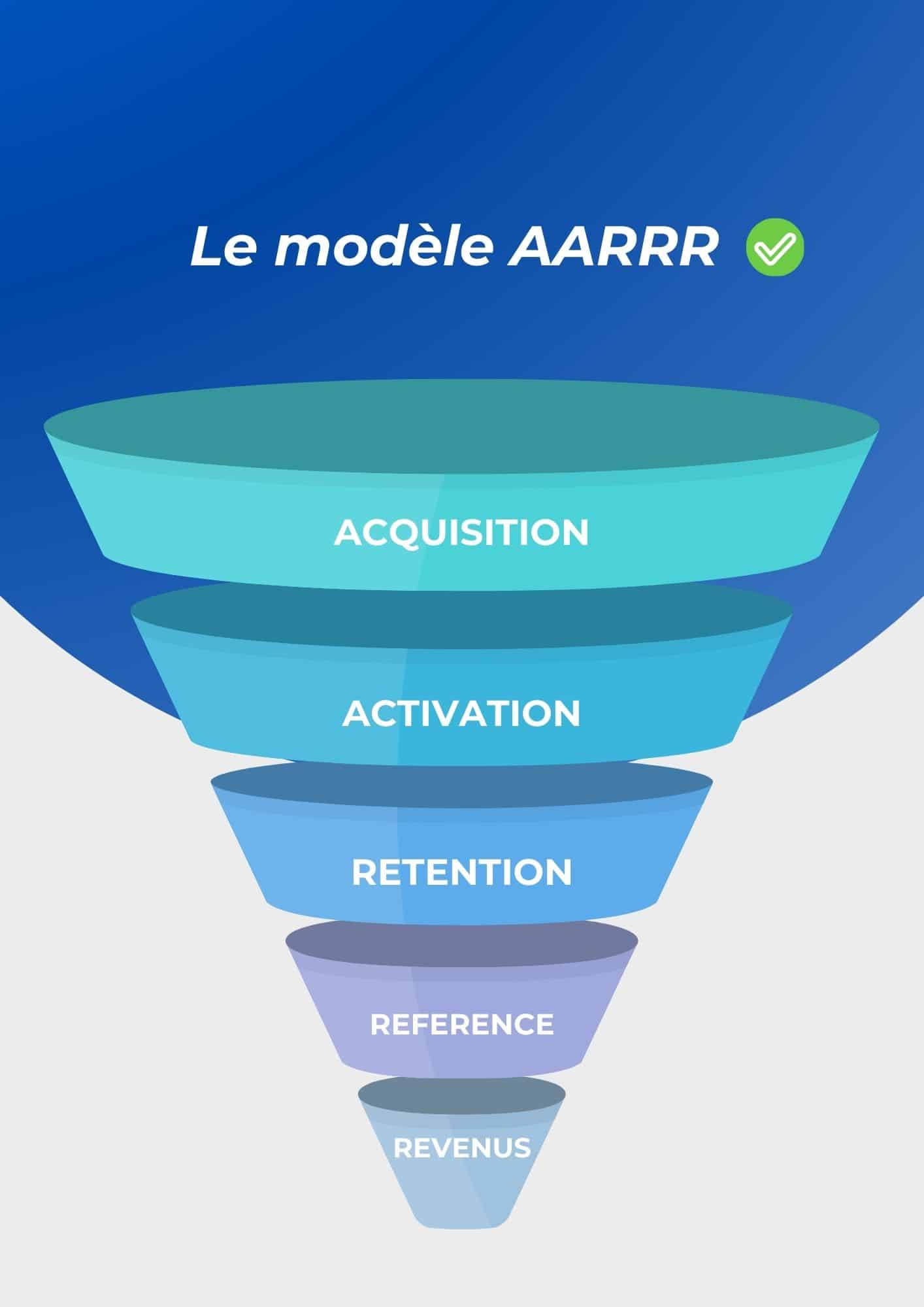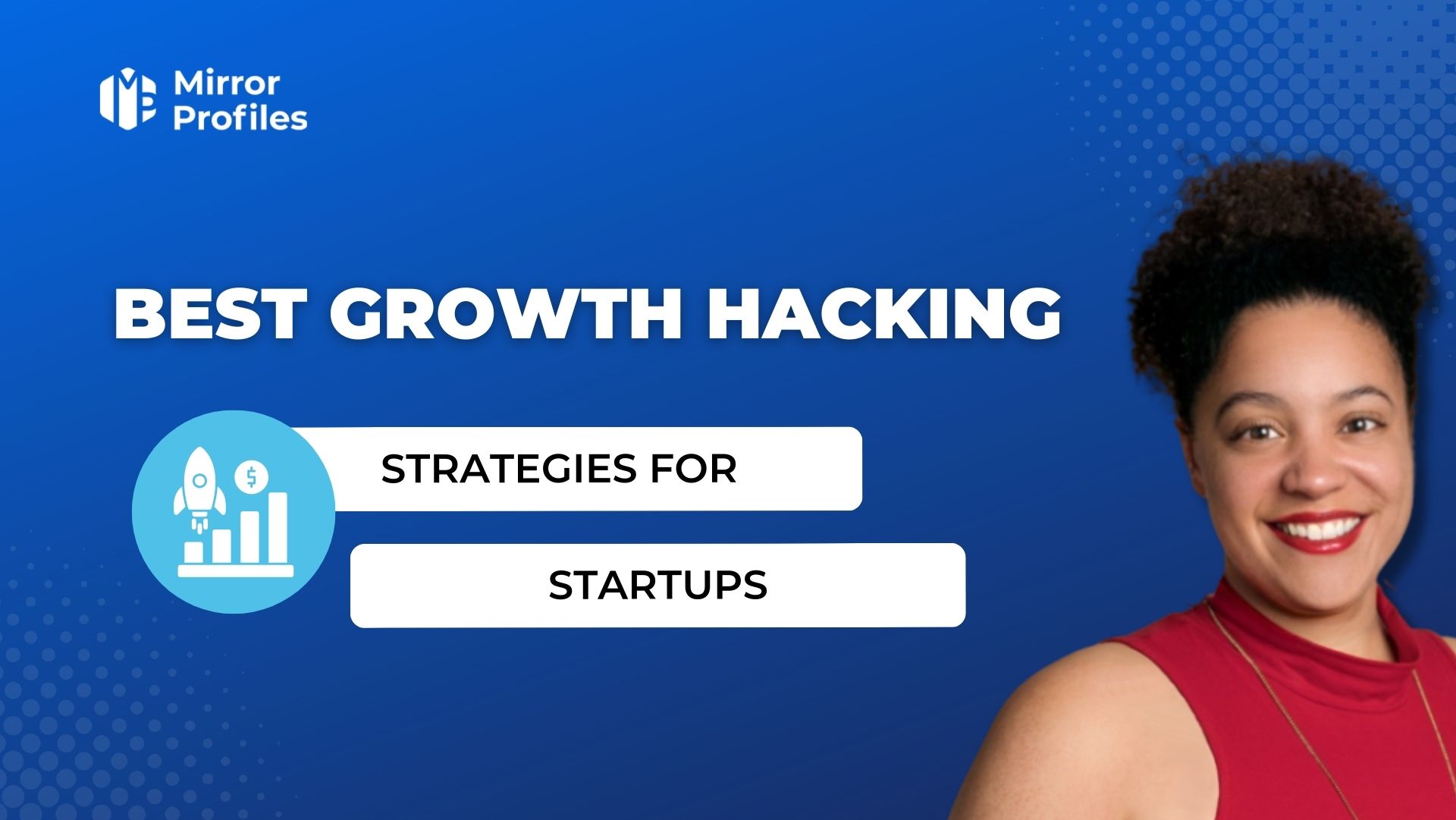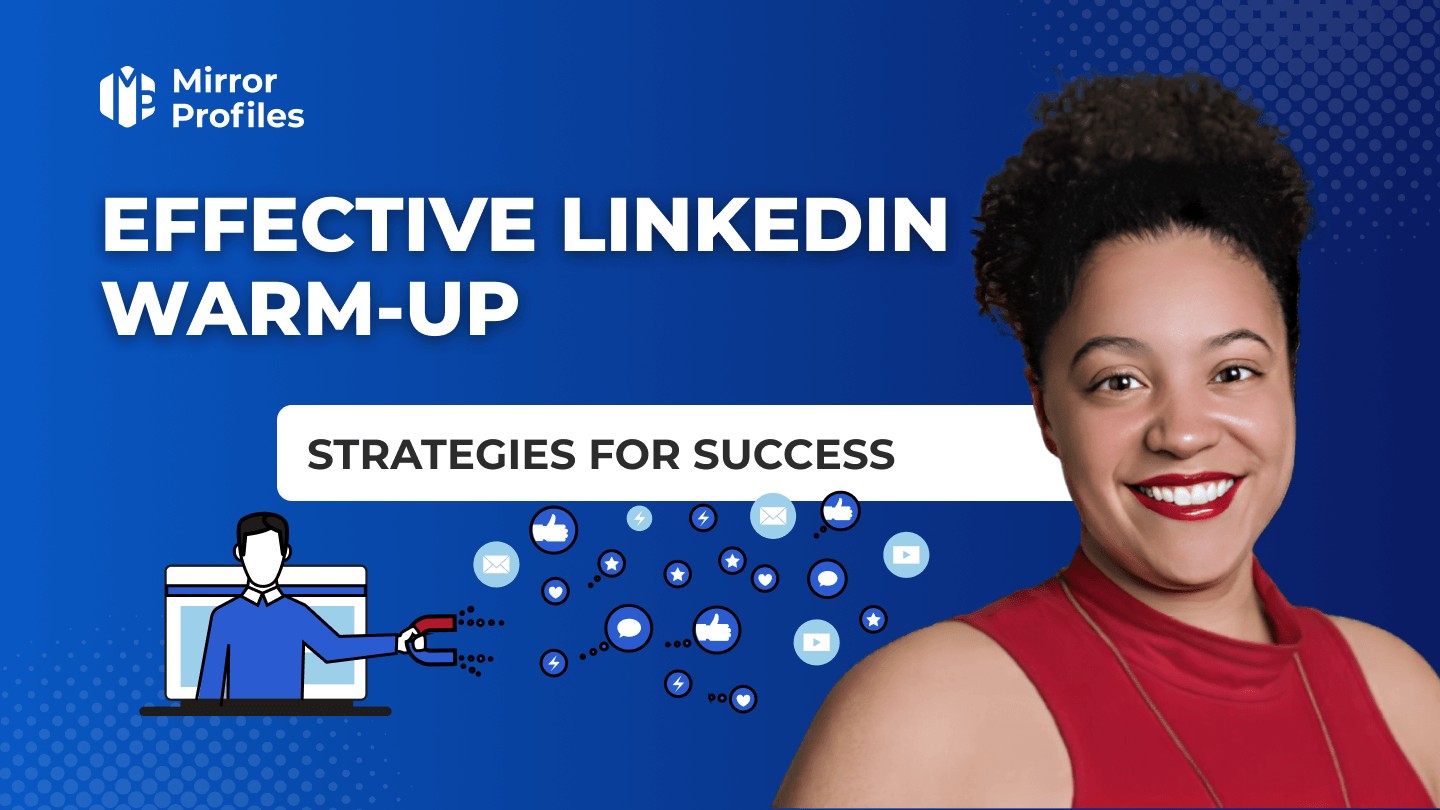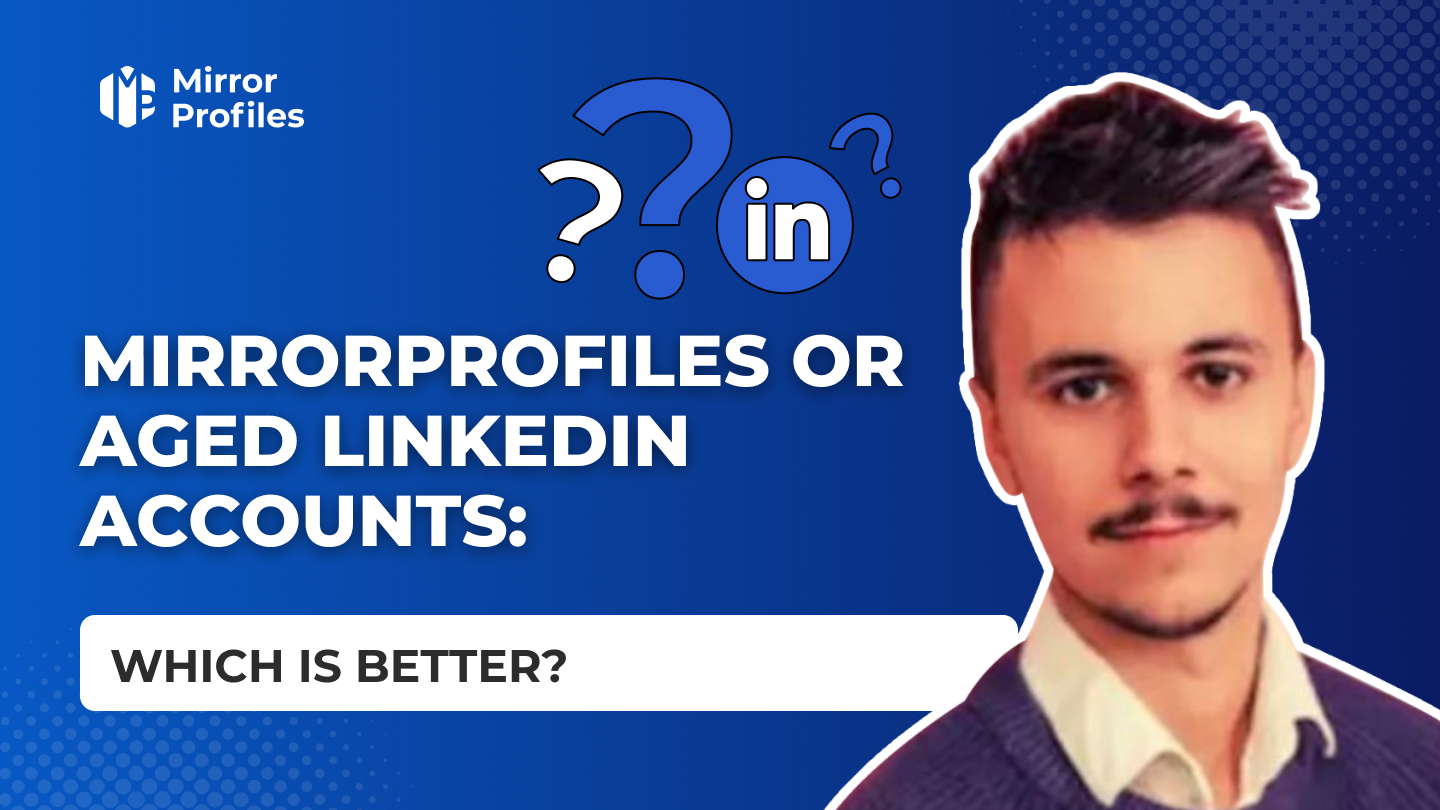Growth hacking, an essential term in the world of startups, focuses on accelerating a company’s growth through creative, innovative, and cost-effective techniques. This digital growth technique focuses on continuous experimentation using various tools to find the most effective growth marketing, product, and distribution strategies. Growth hacking is perfectly suited to entrepreneurs and teams wishing to promote their new business on a limited budget while attracting and retaining a large number of users or customers.
Here, we explore the most effective growth hacking techniques for startups, following the AARRR model, which defines the five key phases of the customer journey: Acquisition, Activation, Retention, Revenue, and Recommendation. We’ll then illustrate our points with case studies of successful products such as Airbnb, Dropbox, and Spotify. Finally, you’ll discover tips on how to become an effective and efficient growth hacker.
Understanding and using the AARRR marketing model
The AARRR marketing model is an essential tool for startups wishing to use data-driven strategies to boost their development and acquire customers. This growth marketing technique describes the customer journey through five key phases: Acquisition, Activation, Retention, Referral, and Revenue. Each phase has specific marketing objectives and key performance indicators (KPIs) that a team needs to measure and optimize. Let’s take a look at how to implement this model to improve your growth marketing technique.

Acquisition: Effectively Attract Your Initial Audience
As part of inbound marketing for your startup, this first step aims to bring visitors to your website or mobile app through various growth hacking strategies and social media content. In the context of outbound marketing, we’re talking here about the prospecting file stage using tools like email campaigns. For LinkedIn, we could go even further and say that this concerns all users who have received a connection request, combined with a common tactic in growth hacking to maximize your startup’s reach.
Successful customer acquisition for your startup requires judicious use of digital channels such as SEO content, SEA, social networks, email marketing, and content marketing tools. The choice of channel should take into account your target audience, your financial resources, and what your company has to offer. Key indicators to monitor include traffic volume, cost per acquisition (CPA), conversion rates, and data metrics, which are essential in growth hacking strategies.
There’s no need to be afraid of volume here, because as the funnel image clearly shows, there will be a significant loss up to the “Revenue” stage anyway. That’s why we created MirrorProfiles, a tool that helps companies streamline the lead generation process. Our tool allows you to bypass LinkedIn quotas and contact thousands of users on LinkedIn, aiding in feeding this stage of the AARRR technique.
Additionally, a COPE (Create Once, Publish Everywhere) strategy can enhance this phase. By repurposing a single piece of content across multiple platforms using digital tools—such as turning a blog post into a podcast or video—you save time and resources while reaching a broader audience. This team-oriented approach can maximize traffic and acquisition rates efficiently.
Activation: Turning a Visit Into a Positive Experience
The aim of growth hacking activation for your startup is to turn the visitor into an active user and customer of what you have to offer. To achieve this, it’s important to offer an attractive, motivating user experience that encourages action, utilizing the right tools and data insights. Setting up a simplified registration, offering a demo or free trial, and providing a tutorial are examples of possible actions. Relevant KPIs here include the number of active users, activation rate, and time spent on your platform—key indicators in the growth hacking approach.
Outbound prospecting concerns the objectives of your campaigns: number of responses, number of meetings or demos. Additionally, using email and social media tools can enhance your marketing-oriented goals, such as increasing the number of white paper downloads, webinar registrations, or new visitors to the site.
To enhance this stage, focus on optimizing the “aha moment”—the turning point when users experience the true value of your product and how it meets their needs. For instance, platforms like Dropbox enabled users to feel their value immediately by demonstrating how seamlessly files could sync across devices. Similarly, ensure your onboarding process uses effective tools to minimize friction and highlights your product’s core benefits.
Retention: Cultivating Loyalty and Maximizing Long-Term Value
Retention is about keeping customers and users interested so that they continue to use your service or product on a regular basis, a phase where growth hacking can offer innovative digital solutions. This means generating value, satisfaction, and trust through data-driven strategies. Exemplary customer service, regular updates, personalized notifications via email, and loyalty programs are all ways of achieving this. The KPIs to monitor are the number of loyal users, the retention rate, and the churn rate, essential for evaluating the effectiveness of growth hacking strategies.
Frequent customer data analysis can also boost retention. Implement a Recency, Frequency, and Monetary (RFM) analysis strategy using advanced data tools. This allows segmentation of customers based on how recently and frequently they transact and the monetary value of their purchases—providing valuable insights and information for personalized campaigns to reduce churn.
Referral: Promoting Sharing and Recommendations
The referral stage, crucial in growth hacking, aims to encourage satisfied customers to talk about your startup, product, or service to others. To stimulate word-of-mouth, it’s important for your startup to create a sense of virality and belonging, by arousing emotions and offering rewards. Using storytelling, collecting testimonials, encouraging social sharing through digital platforms, and developing referral systems with the right tools are all effective techniques. For performance indicators to monitor, think about the number of recommendations, the recommendation rate, and the virality coefficient, measures that reflect the impact of growth hacking efforts on user promotion.
When it comes to sponsorship systems, the question of what to offer in exchange comes up regularly. Keep in mind that these are your customers, so they’ve come to look for the solution in your product or service. Becoming an ambassador for your company can then trigger more personalized advice, discounts on your products, or early access to new features. Utilizing the right tools and team strategies, the classic commission approach still works, but you’ll want something that’s unique to your company.
Leveraging incentivized referral systems has also proven successful. For example, Dropbox’s strategy of offering additional storage for referring a friend quadrupled its user base within 15 months. Incorporating incentive-driven virality into your referral strategy using digital tools could significantly propel your user acquisition.
Revenue: Monetize Intelligently and Increase the Average Basket
To use growth hacking to increase your startup’s revenue, you need to boost sales and increase income by using effective tools and data analysis. To get started, you need to develop a customized business model, set a competitive price, and develop upsell and cross-sell strategies. For example, consider offering premium packages, subscription systems, additional options, or complementary products. Key performance indicators (KPIs) to monitor include the number of sales, average revenue per user (ARPU), and customer acquisition cost (CAC), which provide important information for your growth strategy.
Make an appointment and let's take stock together!
Product-oriented growth hacking strategies
Growth hacking is all about optimizing your product to meet users’ needs and stimulate your company’s growth using the right tools and data insights. Let’s take a look at some effective product-centric strategies.
The Product Itself as a Growth Driver
In growth hacking, using the product as an acquisition and recommendation tool is a key approach. For example, Hotmail inserted the phrase “PS: I love you. Get your free email at Hotmail” at the end of every email sent by its users, resulting in a growth spike, reaching one million users in just six months. In growth hacking, acquisition channels are often limited to SEO, SEA, email, LinkedIn, and telephone. But your product (or service) can be used as an acquisition channel by integrating sharing tools. It’s often underestimated, yet formidable. Using your product in this way will help boost word-of-mouth and shareable content. In B2B as in B2C, recommendation or word-of-mouth is a very powerful vector for lead generation, as it has a high conversion rate.
Freemium and Free Trial Versions
In growth hacking, offering a free version with limited functionality can be effective in generating strong customer commitment and encouraging the transition to a paid offer. Spotify illustrated this technique by offering an ad-funded free streaming service, using tools that entice people to subscribe to their Premium service for an ad-free experience with more features.
However, this really depends on the product and the market. The last thing you want is to base decisions on vanity metrics. Indeed, the risk of freemium is to have a product that only appeals when it’s free. Everyone likes it when it’s free, and whether it’s in terms of returns or even from a financial point of view, I’m not a fan of this technique. To make informed decisions, use data-driven tools to assess the effectiveness of the freemium model for your business.
Generally speaking, the freemium growth model is suitable for businesses where the cost per customer is extremely low, or where the real product you’re selling is the data you’re collecting. Utilizing the right tools and team strategies can optimize the effectiveness of the freemium model for your company.
Strategic Integrations and Partnerships
In growth hacking, linking up with other influential platforms or creating strategic partnerships with companies can boost your product‘s visibility and credibility. For example, by leveraging Craigslist’s reputation for its classifieds service, Airbnb was able to accelerate its growth by reaching a large audience of potential tenants and owners through strategic alliances.
Strategic partnerships are a growth strategy that will enable your company to move on to the next stage, for two reasons:
- They boost your visibility among your target audiences, and even those you didn’t know you had.li>
- You’re building a long-term business based on relationships, not just a product.li>
Strategic partnerships shouldn’t be denied or even limited just because you’re too focused on product development. Indeed, as many successful companies show, sometimes it’s better to have a lesser product but powerful marketing and strong partners supported by effective tools and team strategies.
Virality and Integrated Sharing Mechanisms
In growth hacking, encouraging product sharing between users through rewards and social tools to catalyze natural growth is essential. For example, Dropbox has excelled in this area, offering additional storage space for every new sponsored user, quadrupling its user base in fifteen months.
Using Marketing Automation: The Benchmark Growth Strategy
Marketing automation uses advanced sales prospecting tools and digital platforms to handle recurring or complex marketing operations. In addition to saving valuable time, this growth approach minimizes errors, increases efficiency, and enhances personal contact with prospects and customers. Automation is a central technique in growth hacking that applies to various phases of the buyer cycle, including sending personalized emails, managing leads, segmenting your audience, evaluating their potential (scoring), and maintaining the relationship (nurturing). This essential growth hacking process enables your team to develop tailor-made customer paths, responding specifically to the needs and expectations of each individual, and using data and information effectively to guide the prospect towards the point of sale.
Growth hacking is a crucial method for stimulating the rapid growth of startups using innovative, cost-effective techniques and digital tools. By focusing on the key phases of the customer journey defined by the AARRR model, startups can optimize their strategy to effectively attract and retain users and customers. Case studies of successful companies like Airbnb and Dropbox illustrate the powerful impact of these strategies, highlighting the importance of user experience, strategic partnerships, marketing automation, and data-driven approaches for sustainable growth.
FAQ
What is growth hacking and why is it important for startups?
Growth hacking is a data-driven, creative strategy used by startups to rapidly increase users and revenue with minimal costs. It integrates marketing, product development, and analytics to run experiments, test ideas, and optimize growth channels. This method is crucial for startups due to limited budgets and the need for quick traction and scalable growth.
How can startups effectively implement growth hacking strategies with limited budgets?
Startups can implement growth hacking on tight budgets by leveraging low-cost, high-impact tactics like email marketing with automation, forming strategic partnerships, affiliate marketing, and referral programs to increase reach and conversions. Focus on integrating viral product features early, utilize user-generated content, optimize SEO, and track key performance indicators to refine strategies effectively.
What roles and skills make up a successful growth hacking team in a startup environment?
A successful growth hacking team in a startup includes roles such as Growth Product Manager, Growth Engineer, Growth Marketer, Growth Analyst, and Growth Designer. Key skills are data analysis, coding, marketing expertise, UX design, rapid experimentation, and cross-functional collaboration to drive user acquisition, engagement, and conversion effectively.
What are some common experiments or tactics used in growth hacking to accelerate user acquisition and retention?
Growth hacking tactics include rapid A/B testing of product or marketing changes, viral referral programs (e.g., Dropbox’s storage incentives), interactive content like BuzzFeed quizzes for engagement, urgency messaging (e.g., Booking.com’s “Only 2 rooms left”), community-led content creation, and launch strategies using pre-launch waitlists and founder campaigns. These are all rooted in data-driven experimentation with hypotheses tested against control groups to optimize user acquisition and retention continuously.





